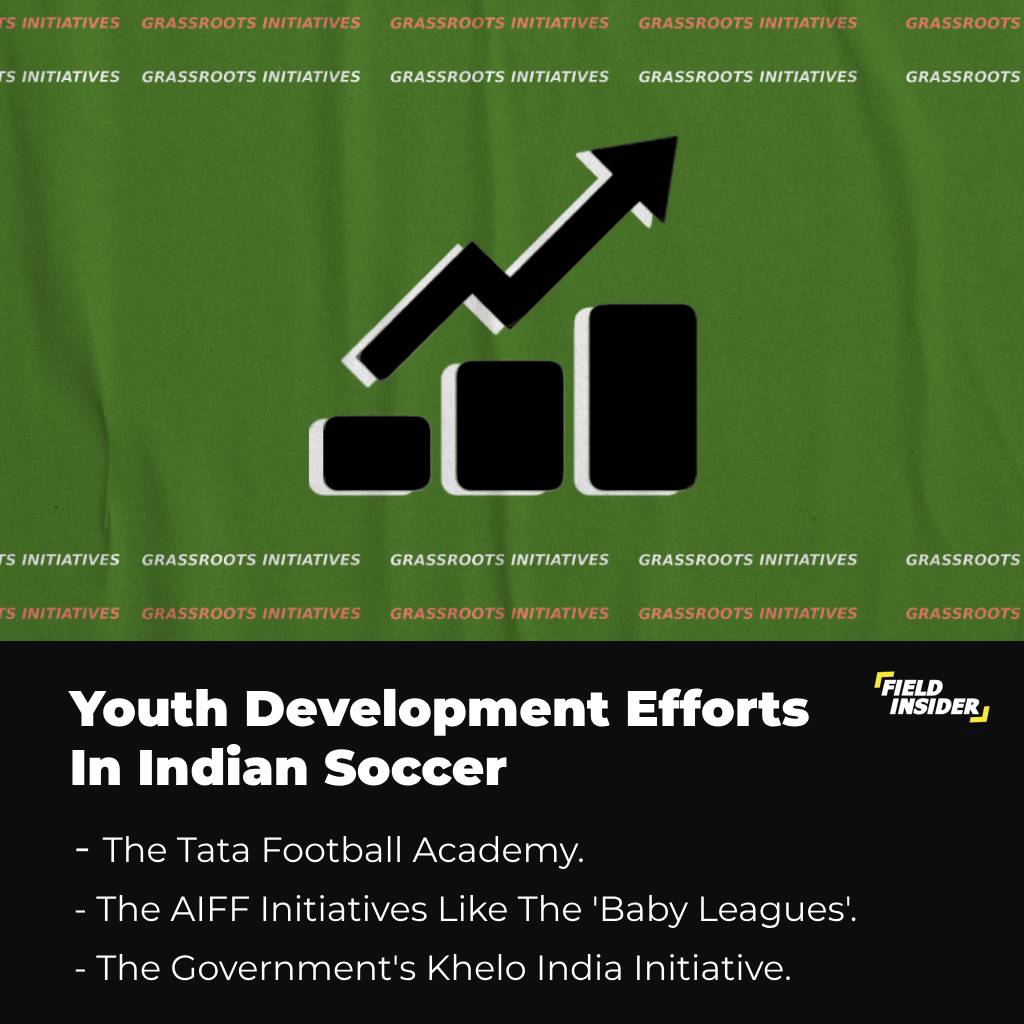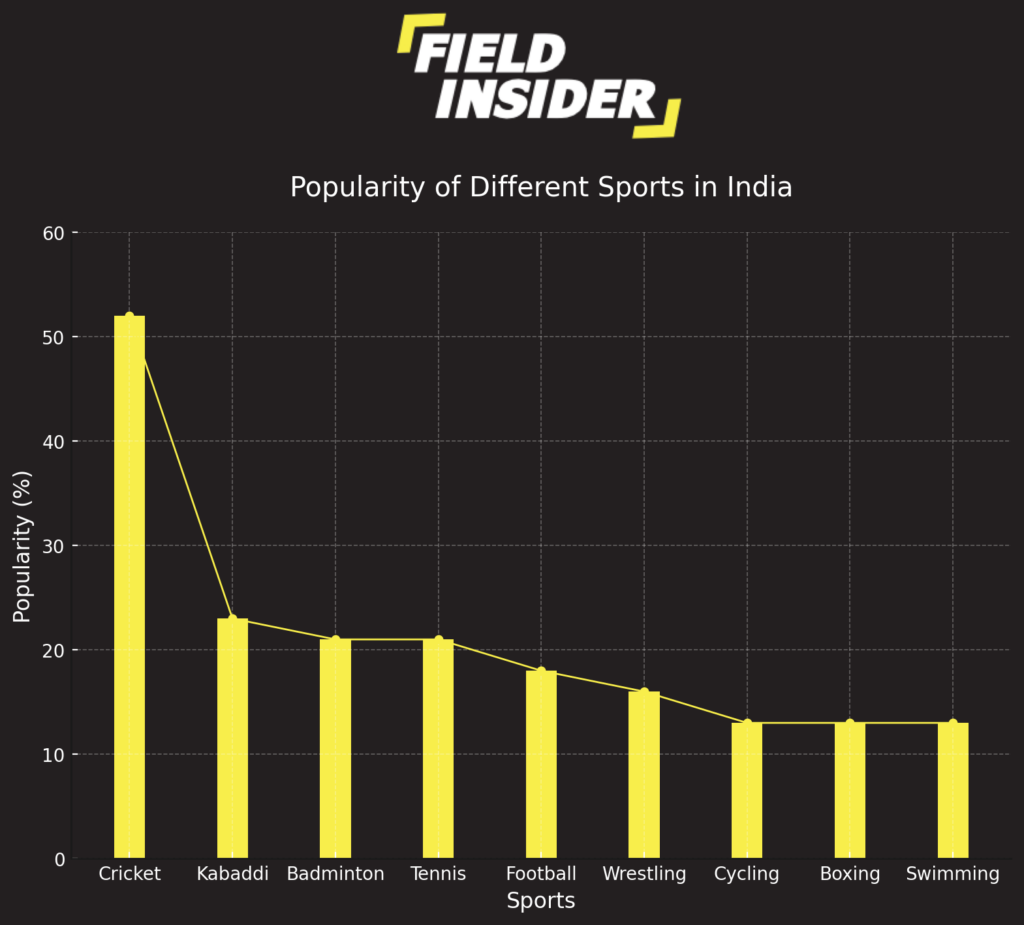Why Is Football In India Not Popular? All You Need to Know
Football arrived in India relatively late in comparison to other sports. In contrast to cricket, which is the second most popular and widely practiced sport, football is not so popular in India. The world’s most popular sport finds itself in an ongoing tussle to capture the hearts of the second-most populous nation.
Despite its global popularity, football in India operates in the shadow of cricket, a sport that’s not just a pastime but an intrinsic part of the country’s identity. The story of football in India is one of a passionate minority trying to find its place in the national consciousness.
Key Takeaways
| Aspect | Details |
|---|---|
| Historical Impact | Cricket’s colonial legacy has overshadowed football, with cultural implications influencing sporting preferences. |
| Infrastructural Deficit | Inadequate facilities and uneven grassroots investment are major roadblocks in the development of football. |
| League Dynamics | The popularity of international leagues like the EPL and La Liga overshadows domestic leagues, affecting local fan engagement. |
| Cultural Preferences | Cricket is deeply rooted in India’s culture, but football’s global influence is creating a shift in younger demographics. |
| Youth Initiatives | Promising initiatives for youth development exist but are hampered by systemic issues like coaching and exposure. |
| Policy Intervention | Government initiatives like Khelo India are positive but require sustained support and a long-term vision. |
| Growth Prospects | Emerging football talents and aspirations for global competition signal a potential upswing for Indian football. |
Historical Context
Cricket’s Dominance In India
Colonial Legacy
The British Raj introduced cricket to India as a means of leisure and a tool of diplomacy. Post-independence, it became a symbol of national pride, with historic victories serving as metaphors for political and social triumphs.
Popularity and Funding
Broadcasting rights, corporate sponsorships, and a well-structured domestic framework have led to cricket’s financial supremacy. The Indian Premier League (IPL) alone has changed the landscape of sports marketing and viewership in the country.
The Indian Cricket League consists of nine professional clubs and 128 registered players. It is distinguished by its high quality and the marketing that accompanies this league.
Regular television broadcasts, followed by the national team’s successes, enthralled the country. Cricket has a strong following among the people of India.
The league earned over $ 1.7 billion from the sale of clubs, television, and commercial rights in India during the first decade of the twenty-first century.
Great competition organization and a professional league with extremely high player salaries have made this league extremely appealing to every player in attendance.

Football’s Historical Presence
Early Origins
People believe football started in India at the end of the 19th century, with the first recorded game played in 1854. Englishmen living in India primarily founded the initial clubs.
The Durand Cup, Asia’s oldest football tournament, is a testament to the sport’s early roots in the country.
Durand Cup
The Durand Cup is India’s first football competition, held in 1888. This competition, the oldest outside the United Kingdom, bears the name of its founder, Mortimer Durand, who understood the importance of sport for good health while he was recovering from an illness.
Initially, this competition was only open to military teams. Some time later, civilian teams could compete in football games.
Influence of Local Cultures
In the Indian states of West Bengal, Kerala, and Goa, football resonates with a passion that rivals any major festival. It is deeply embedded in the local culture, where historic clubs like Mohun Bagan, East Bengal, and Dempo SC are not just teams but institutions that command loyalty across generations.
Matches in these regions are communal events, often leading to streets lined with flags and painted faces, showcasing a collective spirit that transcends the sport itself. The local derbies are not just about winning a game; they are battles for community pride and historical supremacy.
This cultural entrenchment is a ray of hope for the sport’s potential nationwide, illustrating that with the right nurturing, football can indeed become a nationwide passion.
Infrastructure and Facilities
Lack of Proper Infrastructure
Stadiums and Training Facilities
Many football stadiums in India are multipurpose venues, lacking the exclusive design conducive to the sport. Training facilities often fall short in terms of quality pitches, equipment, and medical support. Most of the stadiums are used as cricket pitches, leading to wear and tear that’s not suitable to football.
The scarcity of football-specific stadiums means that the infrastructure does not meet international standards, lacking in essential features like quality turf and dedicated fan zones.
Training facilities mirror this deficiency, often missing the mark on providing high-quality pitches and essential training equipment, not to mention medical and physiotherapy support that are crucial for athlete development.
Investment in Grassroots Development
While urban centers see countable football academies, rural India, where a significant portion of talent may lie, remains largely untouched by structured football development programs.
Rural areas are often sidelined, deprived of the structured development programs that are essential for discovering and nurturing young talent. This neglect means that many potentially gifted footballers may never get the opportunity to sharpen their skills, receive professional coaching, or gain the exposure they need to advance to higher levels of play.
Competition and Leagues
Dominance of International Football
Premier League and La Liga Influence
The glamour and quality of leagues like the EPL and La Liga capture the imagination of Indian fans, making it challenging for domestic leagues to compete for attention.
Indian fans are drawn to the high-stakes drama, the storied history of clubs like FC Barcelona and Real Madrid, and the star power of players who are household names across the globe.
Broadcast in prime time and marketed with a flair that rivals Bollywood, these leagues offer a spectacle that Indian football has struggled to emulate. They don’t just entertain; they create a sense of belonging to a global community, making the local leagues seem ordinary by comparison.
Impact on Viewership and Fanbase
With each thrilling match from Europe, the standard for football entertainment is set a notch higher, often out of reach for domestic leagues.
International football’s dominance has a twofold impact: it raises the bar for quality, which domestic leagues struggle to match, and it splits the fanbase, drawing viewers away from local competitions.
Consequently, local leagues suffer from lower viewership, less media coverage, and ultimately, a struggle for relevance.

Issues with Domestic Leagues
Indian Super League (ISL) vs. I-League
When the Indian Super League (ISL) was introduced, it was seen as a turning point for Indian football, promising to revolutionize the sport with its franchise-based model, much like the IPL did for cricket.
The ISL attracted investment, celebrity ownership, and international talent, aiming to attract the urban middle class and youth.
However, this new league clashed with the older and more established I-League, leading to a split in the fanbase and a tug-of-war for resources and recognition.
This rivalry has created a dichotomous football ecosystem in India, where neither league can claim undivided attention or resources, causing strategic disorganization and causing disturbances in the potential development of the sport.
| Ranking | Football Tournaments in India |
| 1 | Indian Super League |
| 2 | I-League |
| 3 | Durand Cup |
| 4 | IFA Shield |
| 5 | Subroto Cup |
| 6 | Santosh Trophy |
Lack of Continuity and Branding
The domestic football leagues in India struggle with issues of continuity and branding. Frequent changes in team ownership, sponsorships, and even the teams themselves disrupt the narrative that fans can follow from season to season.
Moreover, inconsistent scheduling due to clashes with cricket seasons, monsoons, and now the ISL, leave fans puzzled and unable to develop the habitual loyalty seen in fans of European clubs.
Without a consistent and compelling storyline, and with teams sometimes disappearing or relocating overnight, the domestic leagues struggle to cultivate a strong and enduring brand identity that relates with and retains fans.
This inconsistency hampers the establishment of a lasting legacy that can be passed down through generations, which is a base of deeply rooted sports cultures.
Cultural Factors
Cricket’s Cultural Significance
Idolization of Cricketing Legends
In India, cricket transcends a mere game to become a core element of national identity, with cricketers such as Sachin Tendulkar and Virat Kohli revered as national icons, not just sportsmen.
Their legendary status arises from memorable victories, personal achievements, and the deep emotional bond cricket shares with the Indian people.
Tendulkar, often referred to as the “God of Cricket,” and Kohli, a modern icon of sporting excellence, are seen as image of ambition and success.
Aspiring athletes look up to these figures, dreaming of replicating their heroics, which elevates cricket to a passion and pursuit above all other sports. This hero-worship creates a formidable cultural narrative that other sports, like football, find almost impossible to penetrate.
Family and Societal Pressures
In a country valuing economic progress and social mobility, people often judge sports by career prospects. Cricket offers a well-funded infrastructure, lucrative deals, and a clear route to fame, making it a sensible choice for youths seeking glory and security.
Football, by contrast, is seen as less financially rewarding and more uncertain, making families wary of encouraging their children to pursue it seriously. This societal principle places immense pressure on young talent to head to the ‘safer’ choice of cricket.
Football’s Growing Appeal
Emerging Fan Clubs and Communities
India’s cities and digital boom foster football fan clubs. Fans rally around teams like Manchester United and ATK Mohun Bagan. They gather for debates, watch parties, and events. Clubs meet for screenings, tournaments, and charity. This knits football culture into India’s urban fabric.
This sense of community extends beyond geographical boundaries, with social media platforms enabling fans to connect, share, and celebrate football with an intensity that was previously unseen in the Indian context, thereby paving the pathway for a more substantial domestic fan base.
Influence of Global Football Culture
Global football events captivate India. The FIFA World Cup and UEFA Championship are more than just tournaments. Stars like Messi and Ronaldo are now familiar in Indian homes. They inspire the youth deeply.
It’s common to see youngsters in jerseys of their favorite stars. These jerseys reflect their aspirations. This global football passion is taking root. It may transform young Indians’ dreams, boosting grassroots football engagement.
Grassroots Initiatives
The Importance of Youth Development
Success Stories from Academies
Football academies like the Tata Football Academy in India has produced renowned players like Mahesh Gawli and Clifford Miranda, who have excelled in both national and international football arenas, highlighting the potential of structured youth development.
Top 10 Tata football academy graduates of all time
| Player | International Appearances |
|---|---|
| Mahesh Gawli | 96 |
| Renedy Singh | 72 |
| Gouramangi Singh | 71 |
| Subrata Paul | 67 |
| Clifford Miranda | 45 |
| Syed Rahim Nabi | 37 |
| Narayan Das | 30 |
| Robin Singh | 30 |
| Udanta Singh | 29 |
| Carlton Chapman | 12 |
Role of the All India Football Federation (AIFF)
The All India Football Federation (AIFF) has taken significant steps to cultivate young talent through initiatives like the ‘Baby Leagues’. Aimed at children as young as under-6, these leagues provide a structured environment for regular play, essential for skill development and fostering a love for the game.
The AIFF focuses on making football accessible and consistent. Their programs aim to spread football education and find talent across India. This nurtures young prospects for professional careers. It also builds a solid grassroots foundation for football’s growth.

Challenges in Nurturing Young Talent
Scarcity of Quality Coaching
India’s football scene is effected by a shortage of well-trained, certified coaches, which is a significant barrier to the development of young players.
The scarcity means that many players, especially in remote or underprivileged areas, have limited access to the tactical and technical training that could refine their talent.
This lack of professional guidance at the foundational levels prevents young athletes from realizing their full potential and enhancing the overall quality of play within the country.
Lack of Exposure and Opportunities
Indian footballers often find themselves in a constrained environment where opportunities to test their capacity against international counterparts are few . The limited exposure to different styles of play and competitive intensity at the global level means that players may not be adequately challenged to improve.
Furthermore, the absence of platforms to showcase their talent on a larger stage restricts their growth prospects, leaving many to play within the domestic standard, which may not push them to the standards seen in football’s global arenas.
Government Support fOR iNDIAN sOCCER
The Role of Government Policies
Khelo India Initiative
The Khelo India Initiative is a state-supported program. It aims to revitalize India’s sports culture from the grassroots. Its goal is to build a robust sports infrastructure nationwide.
The initiative ensures that young athletes, from any socio-economic status, get access to top sports training and facilities. The program also emphasizes identifying and nurturing promising athletes with the potential to represent India on international platforms.
By fostering a culture that values sporting activities, Khelo India is not just about creating champions, but also about encouraging a healthier, more active lifestyle among India’s youth.
Funding for Sports Infrastructure
In recent times, the Indian government has increased up its investment in sports infrastructure, recognizing its importance in the cultivation of talent and the overall development of the country’s sports culture.
Despite this increase, the funding is often disproportionately in favor of cricket, the nation’s most popular and financially lucrative sport. This imbalance results in cricket facilities seeing state-of-the-art developments, while infrastructure for sports like football lag behind.
For football to reach it’s full potential , there is a need for a more equitable allocation that provides the sport with the necessary grounds, training centers, and equipment.
The aim should be to create an environment where football, alongside other sports, can grow with the infrastructure that supports high-level training and competition.
Addressing the Need for Long-term Commitment
Sustained Investment in Football
For football to gain a place in the Indian sports scenario, there must be a continuous flow of investments, not just an one-time funding. These funds are essential to build modern stadiums, maintain quality pitches, and equip training facilities with the latest technology.
Such financial support should also extend to establishing football academies and scholarships that can aid in the discovery and nurturing of new talent. The government and private sector’s continuous financial commitment could lead to improved league systems and international competitiveness.
Promoting Sports Culture at the Grassroots Level
Sports need a cultural boost in India. It starts with schools and local programs. They must highlight sports as vital for kids. Early sports involvement is key. It teaches fair play, teamwork, and health.
Grassroots rewards can motivate kids and parents. This can make sports a worthy goal. Respect for sports in society and schools is essential. This could make football a top career choice for Indian youth.
Potential for Growth
The Rise of New Footballing Heroes
Sunil Chhetri’s Influence
Sunil Chhetri stands as an inspiration in Indian football, embodying the success achievable on the international stage.
As the captain of the Indian national team and one of the highest scorers in international matches among active players, Chhetri has become a role model for countless young athletes across the nation.
Chhetri’s presence has sparked greater interest in the sport among the youth. Aspiring footballers, who now have a tangible example of an Indian footballer making it big.
His influence today extends beyond the pitch. He actively engages in promoting the sport, thus playing a crucial role in the gradual shift of India’s sports culture towards football.
Who are the Most Popular Indian Footballers ?
Gostha Pal
Gostha Pal is a household name in Indian football. Interestingly, he used to play football barefoot before football became popular in India, and he was regarded as one of India’s best defenders at the time.
Born in today’s Bangladesh in 1896, he was regarded as a fearless player. His defending abilities earned him the moniker ‘The Chiner Pacheer’ (The Wall of China). He was also the first football player to receive the ‘Padma Shri’ award in 1962.

Peter Thangaraj
Peter Thangaraj is, without a doubt the best goalkeeper in Indian football history. Moreover, he is frequently regarded as one of the best in Asia. He was India’s first goalkeeper for about a decade after making his debut in 1955.
Thangaraj played for India both at the 1956 and 1960 Olympic Games. He also represented India at the 1958 Tokyo, 1962 Jakarta (where India won the gold), and 1966 Bangkok Asian Games. In 1958, he was named Asia’s Best Goalkeeper.
Subimal Chuni
Subimal Chuni Goswamy was a striker known for his ball control, passing, and game-reading. He was the captain of the Indian team which won the 1962 Asian Games at Jakarta and the silver medal in the Asia Cup Soccer tournament (1964) held in Israel.
Tottenham Hotspur approached him several times after his achievements at the 1962 Jakarta Asian Games, but he eventually turned down the London club and remained loyal to his club Mohun Bagan.
Sunil Chhetri
Sunil Chhetri is the current captain of India’s national football team and the country’s most famous player. He is also the player with the most national team appearances and India’s top goal scorer of all time, with 93 goals in 144 appearances.
His performance earned him a contract with Sporting Kansas City of Major League Soccer (MLS) in 2010 and a contract with Sporting Portugal’s B side in 2012.
He returned to India after two years in Portugal, where he led Bengaluru FC to two I-League titles. Sunil Chhetri earned the AIFF Player of the Year title four times, in 2007, 2011, 2013, and 2014. Many consider him the greatest footballer ever to play for India.
Emerging Talents Making Their Mark
Young players are beginning to make their presence felt in domestic and international arenas, signaling a positive trend for the sport. These young talents are increasingly being recognized by clubs abroad, offering them opportunities to train and compete at high levels.
Their success is pivotal in demonstrating the potential of Indian footballers to compete against global competitors, enhancing the country’s reputation in the football world.
The rise of these players is also vital for the domestic leagues, bringing a fresh wave of enthusiasm and lifting the quality of the game within India.
International Recognition and Ambitions
India’s Aspirations in FIFA World Cup
The dream of qualifying for the World Cup fuels aspirations and motivates stakeholders to invest in the long-term development of Indian football. This aspiration drives the need for a strong domestic foundation, prompting increased investment in youth development, coaching, and infrastructure.
The football community in India is urged to aim high. They’re adopting global standards and a professional mindset. This shift could redefine Indian football. It’s a path that might inspire future generations.
Has India ever participated in FIFA World Cup ?
India has never participated in the FIFA World Cup, although they did qualify by default for the 1950 World Cup after all other nations in their qualification group withdrew.
However, FIFA decided that no national team could compete without equipment, so India decided not to participate in the tournament, despite the fact that football was not very popular in India.
Opportunities on the Global Stage
India’s encouraging performances in continental competitions like the AFC Asian Cup have demonstrated the potential of Indian football on the international stage.
These experiences are crucial for players to gain exposure to different playing styles and higher levels of competition. Success in these arenas not only boosts the confidence of the national team but also raises the profile of Indian football globally.
It is a testament to the growing capabilities of Indian players and serves as a call to action for sustained improvement and support. If the current progress continues, the day may not be far when Indian football will be a regular and respected participant in major global tournaments.

What was the First Successes for Football in India?
In 1951, they won gold at the first Asian Cup in New Delhi. A year later, they were eliminated from the Olympic Games after a humiliating 1:10 loss to Yugoslavia. However, in 1956, the Indian national team achieved great success by reaching the Olympic Games semifinals in Melbourne. W
The Yugoslav national team once again proved fatal for them. Then again, who doesn’t? When they were eliminated in a group that included France, Peru, and Hungary.
Most watched sports in India
The bar chart illustrates the popularity percentages of different sports in India. Here’s a breakdown of the information displayed:
- Cricket is the most popular sport, with a significant lead, at 52% popularity. This underscores cricket’s dominance in the Indian sports landscape.
- Kabaddi stands as the second most popular sport at 23%, which indicates its strong cultural presence and viewership in India.
- Badminton and Tennis are tied in popularity, each with 21%. This reflects the growing interest in racquet sports in India, likely influenced by international successes of Indian players in these sports.
- Football holds 18% popularity, standing out in India where cricket usually overshadows other sports.
- Wrestling has a 16% popularity score, suggesting a considerable interest, potentially due to traditional forms of wrestling and India’s achievements in international wrestling events.
- Cycling, Boxing, and Swimming each have a popularity of 13%, indicating a moderate level of interest among the Indian audience.
Overall, the chart demonstrates that while cricket is the clear favorite among Indian sports fans, there is also a significant and diverse interest in other sports.

Conclusion
Indian football faces hurdles but holds promise. Addressing its challenges is vital. The aim is clear: make football as beloved as cricket. This would broaden India’s sporting narrative.
With unwavering commitment, football has the potential to flourish. It could become a key part of India’s rich sports culture. If momentum holds, the football field might stand equal with the cricket pitch in the hearts of Indian fans.








